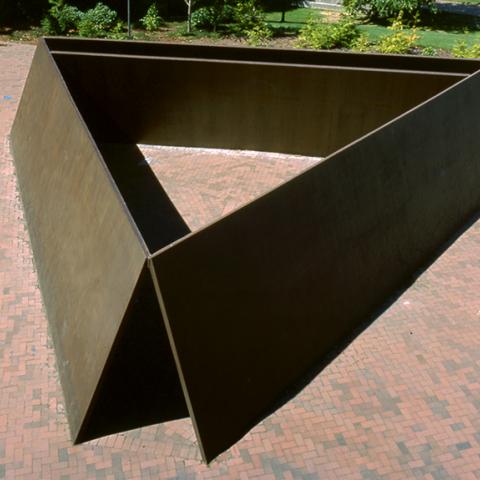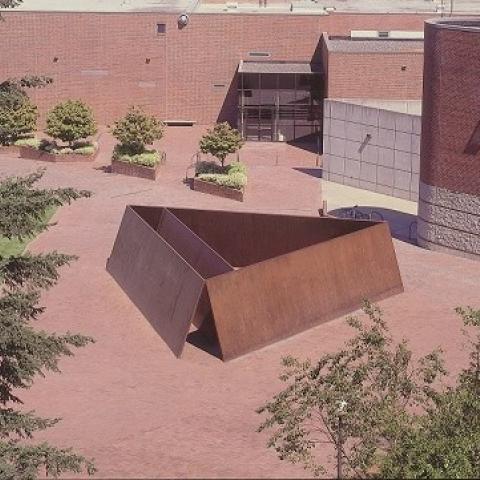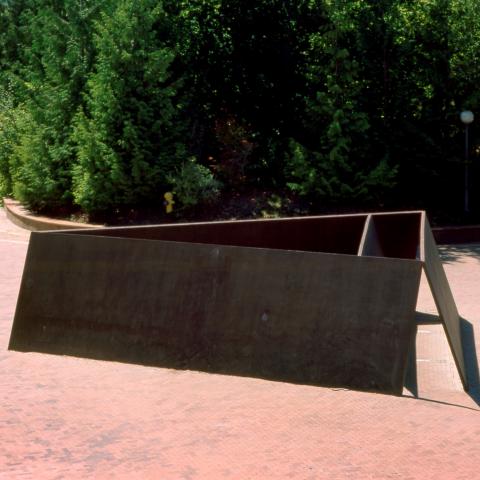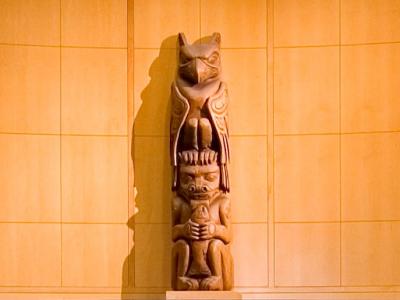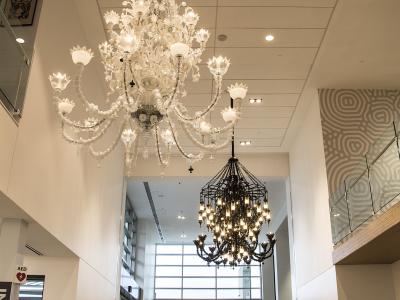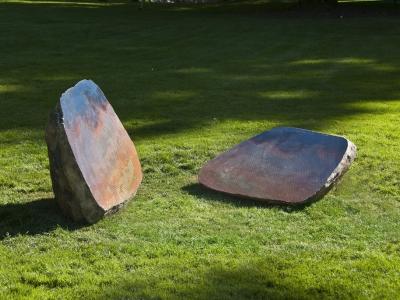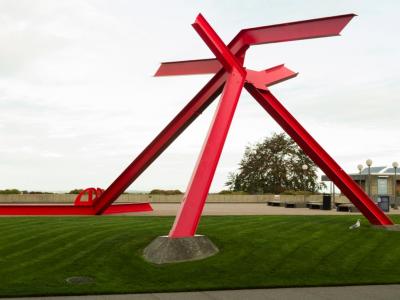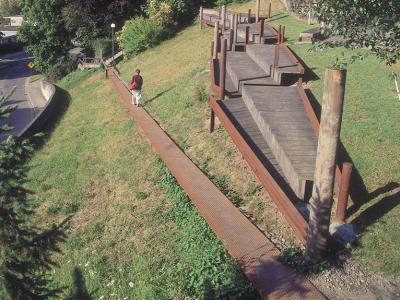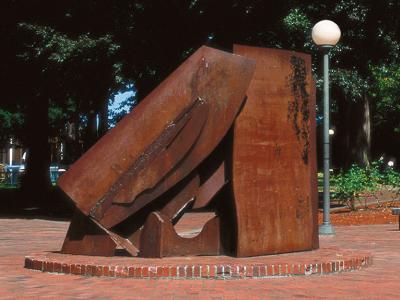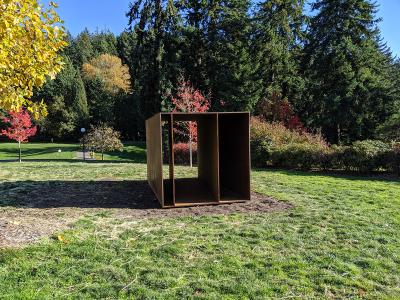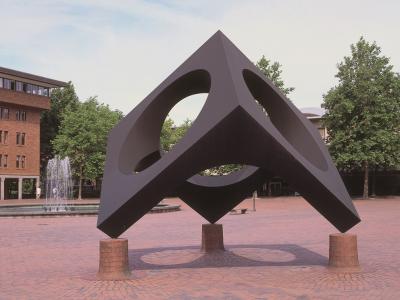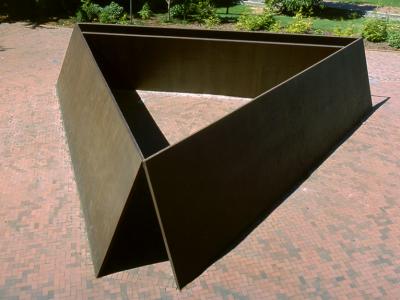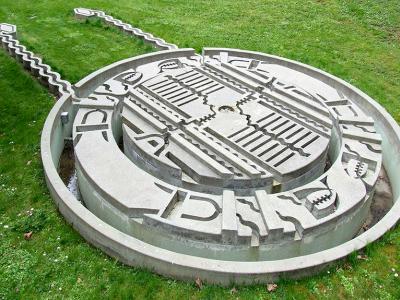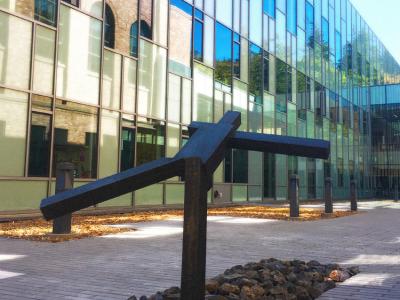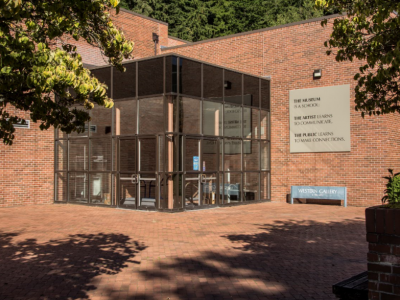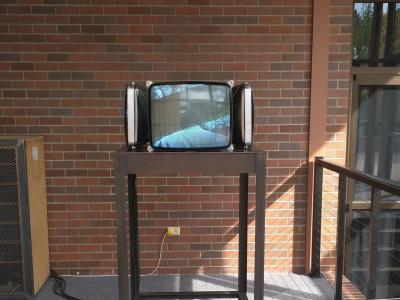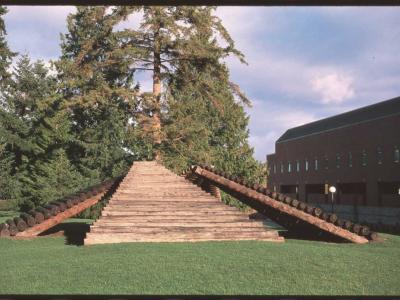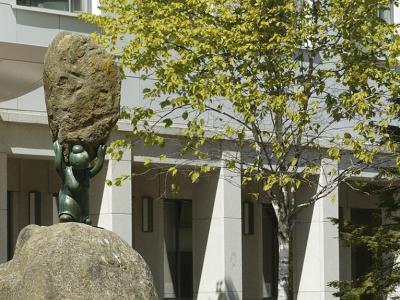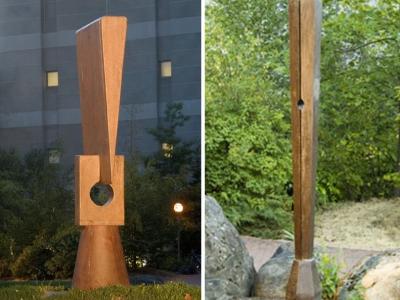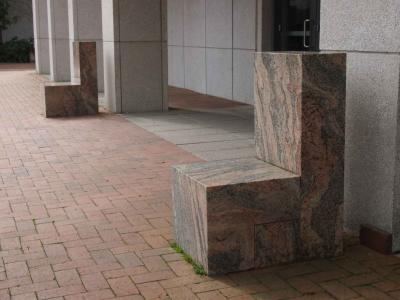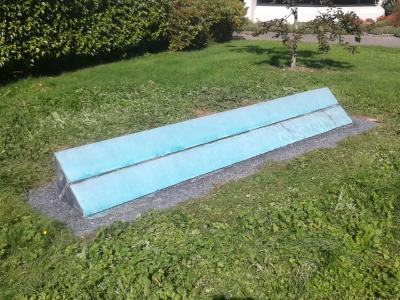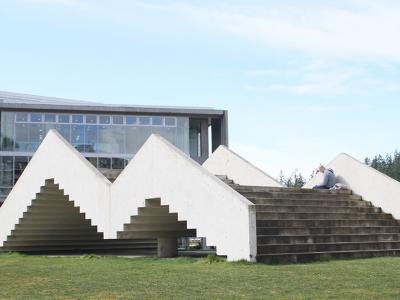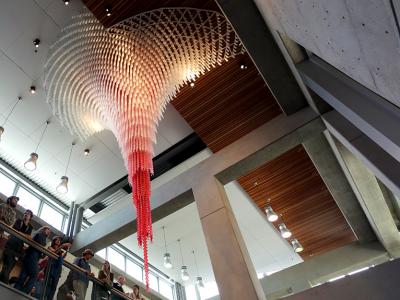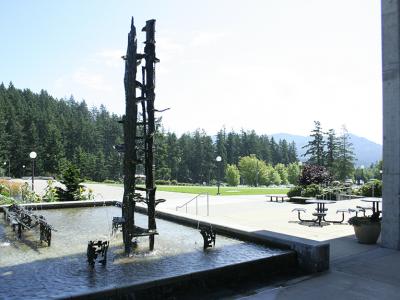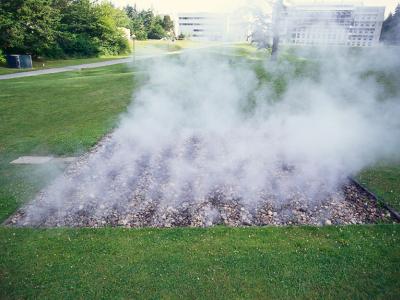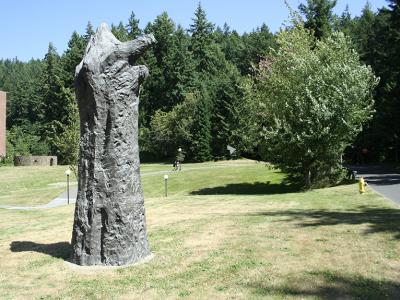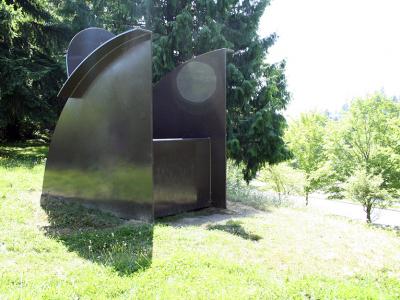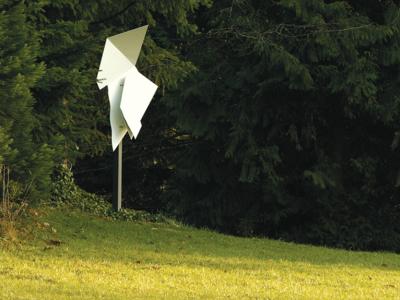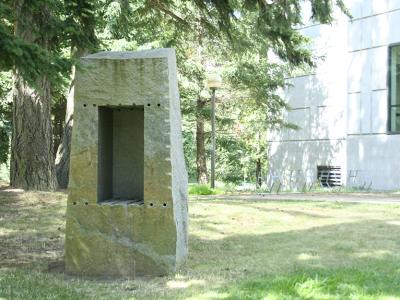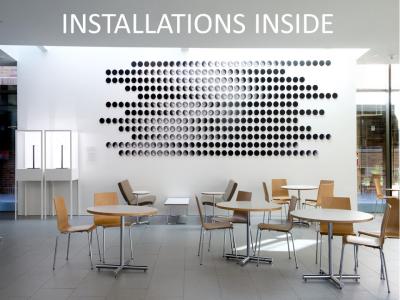Richard Serra, Wright's Triangle, 1979-80
Richard Serra, 1979-80.
Corten steel. 9' h. x 42 3/4' w.
Photo credit: Rod de Pozo
Art Allowance from Arntzen Hall and Environmental Studies Center, the National Endowment for the Arts, and the Virginia Wright Fund.
Description
Walk around the sculpture with Google Street View
Each of the triangular openings of Serra's sculpture echoes one of the three paths which meet at his site adjacent to the Western Gallery's plaza. Concerned with the freedom to make spaces which are different in kind than that of architecture, Serra allows the viewer to walk around and through his work so to come to terms concerning ideas of confrontation, enclosure, and the union of physical action and intellectual thinking.
Maki would agree with Serra's statement that ''drawing can be an activity that filters reality into another form that allows one to rethink one's experiences." 20 In taking a drawing from a two-dimensional to a three-dimensional space, Maki tends to continue to emphasize the eye while Serra has also built into his response a gravitational theme. Using the same geometric shapes as Judd and Maki, Serra had led the way in pointing out that these forms' meanings had nothing to do with an ideal philosophy. In taking on the cube, he slanted its walls so that any sense of ideal conditions turned to a world of contingency. After all, Wright's Triangle (1979-80) is a free-standing prop piece.
Full text
When Serra first proposed Wrights Triangle the idea of the work was based on the confluence of college pedestrian traffic at the base of Red Square. After University engineers deemed that the floodplain ground was too unstable for such a heavy work, Serra moved his concept south to the crest of the hill beyond the square. At the base of Red Square the sculpture would have been in a more urban space. The horizontality of the sculpture would have contrasted with the taller buildings, but the sculpture's angles and wedged openings would have thrust the dense traffic flow in to its interior. At the crest of the hill, Serra's sculpture was clearly at the edge of a more natural environment of open grassy mounds and tree-lined paths. Here, pedestrians also converge from two southern paths (at times parallel or diagonal to each other) to head downhill toward Red Square. While the path alignment has remained relatively constant, newer buildings (Ross Engineering Technology and Chemistry building), pressed their own strong shapes onto the site. The walkways have increased in scale to become more like a plaza.
The fact that the surrounding elements of the site have changed since the eighties does not take away from Serra's long-held view of the importance of a site. Comparing how a ball bounces on a street versus in the landscape, Serra feels that urban spaces are really interior spaces turned inside-out. In contrast to the vertical and horizontal lines of buildings themselves in gridded space, the horizontal line in a landscape constantly shifts, and spatial coordinates are less obvious. He has been averse to the pragmatic concerns of architects whose primary vision is to match program with budget and who might select sculpture according to its ability to be in harmonic relationship and/or decorative balance with the building. If he has been most vocal against the architectural profession, one might wonder why his sculpture appears to take on the scale and some of the structures of architecture. From below or as one starts up the hill toward his sculpture at Western, there is no doubt that it looks like a great wall.
But Wright's Triangle has never been a monumental object or a building. The work probably has the explicitness of a map that has been opened up; it is an active site. At Western, Serra did not want to correct nature with his geometry, but he used the contrasting shapes to make the landscape even more vivid, more irregular, more natural. He pulled the campus paths and those who walk them inside his sculpture to create new internal structure and to give the viewer direction when he exits via the shifting landscape. Against the tendency of an architect to emphasize the facade as the sing and only view-for example, the glass image of the Chemistry building—Serra created a free-standing prop piece so that the sculpture's balance is only understood by the viewer's constant circulation in and around it. Through this experience the viewer realizes that Serra has created a personal exchange at the site. In fact, the sculpture a real site.
At this site, Serra redirects our attention to real world conditions. He makes gravity visible not through neutralization as in the physics of stationary walls in a building but rather through kinetic energy as in the physics of a steel ball's movement down slope. The weight in his material is correlated with the intensity of the event, the time it takes for the viewer to feel his own precarious balance, his own potential to rise and fall. Serra is also aware of how weight has been transferred to our consciousness both from his art and from industry. He extends sculpture's process from artistic hand with tool to industrial technology. He refers both to the weight in Olmec Heads, Inca or Mycenaean architecture as well as to that in the work of engineers and riggers. Besides using an industrial material, Serra depends on the industrial laborer to help him make his work. By working in a public site and by using the standard means of production, he shifts emphasis from the persona of the artist to the work itself. Since the popular conception of art is that it is done with highly specialized, even fetishistic, materials only encountered in a private space on one's free time, Serra revises this so-called uselessness and remoteness of art. He concentrates on the work process itself, which deals with using time and energy efficiently but in the end he makes an abstract product.'' This product is a sculptural reading of this specific site that is not just a place where campus paths come together. It is also a sculptural place where a student finds parallels between his physical and intellectual weight; a place where he can find some type of balance in real world situations; and can perceive a unique relationship between work and leisure.
© Sarah Clark-Langager
